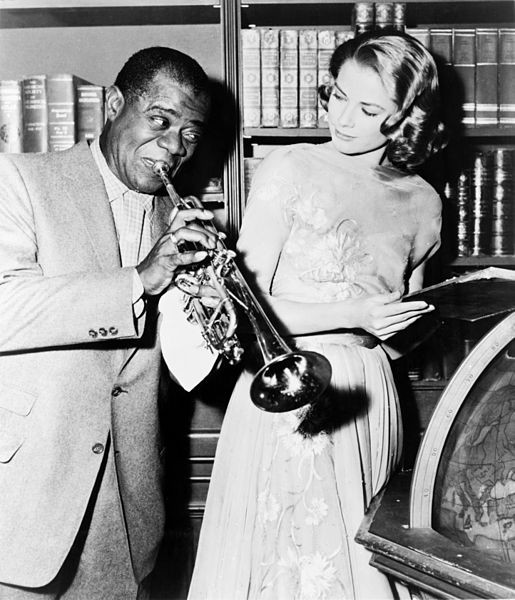New Book Reminisces About Jazz Legend Louis Armstrong’s Big Band Years

Heart Full of Rhythm: The Big Band Years of Louis Armstrong
Ricky Riccardi
Oxford University Press
Author Ricky Riccardi has written several books about the career and accomplishments of Louis Armstrong. Heart Full of Rhythm covers the Big Band and swing era.
Louis Armstrong’s career spans from the 1920s to 1971, the year of his death. During the 1920s, Armstrong established himself as the most influential jazz musician of his time. The tradition of Dixieland jazz, improvised in small groups, was continued by bands led by Tony Parenti and others and has continued through to today, with newer generations of jazz musicians.
Big Band flourished in the 1930s and ‘40s. It was mainly designed for and performed in ballrooms and clubs that provided a space for dancing. Although improvised jazz-style solos were incorporated into the arrangements, the music was basically performed by disciplined musicians organized into groups of trumpets , trombones, saxophone/clarinet, and percussion. The music was based on popular tunes and music from Broadway shows and movie musicals. The acclaimed leaders of the Big Bands included Benny Goodman, Duke Ellington, Tommy Dorsey, and Harry James.

The 1929 chapter describes Armstrong’s performance of “After you’ve gone,” a staple performed by a number of bands. His early band was styled after the sweet swing style of Guy Lombardo. The ensuing chapters summarize Armstrong’s performance and singing career -- many of which became classics: “What a Wonderful World” and “Mack the Knife” from The Three-Penny Opera.
Armstrong’s dual career as a jazz player and vocalist continued through the remainder of his life. He sang with other jazz legends, such as Ella Fitzgerald and in cameo music roles in movies. He continued performing with his group and core members, Barney Bigard, Jack Teagarden, and Earl Hines into the 1950s.
Armstrong was also immensely popular in Europe, often referred to as America’s Jazz Ambassador. He is said to have considered himself a “performer of music.”

Although of interest to a general reader, Riccardi’s book is focused on a well-researched, scholarly book of a formative period of Armstrong’ long professional career, and specifically tailored to Jazz enthusiasts.
As with his other books about Louis Armstrong, Riccardi does an excellent job of delving into detail about the background material of Armstrong’s career -- mostly recordings, club dates, and the indelible mark the great master made on this important genre of American music.
Author Bio:
James Fozard is a contributing writer at Highbrow Magazine.
For Highbrow Magazine
Image Sources:
Library of Congress (Wikimedia, Creative Commons)
Library of Congress (Wikimedia, Creative Commons)
Oxford University Press































































































































































































































































































































